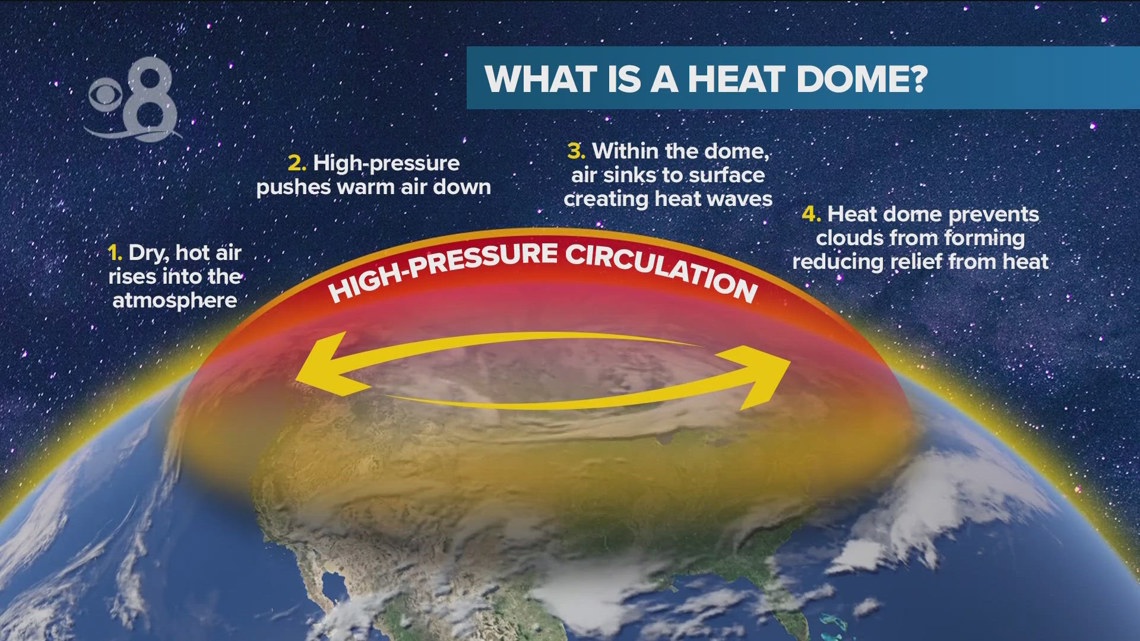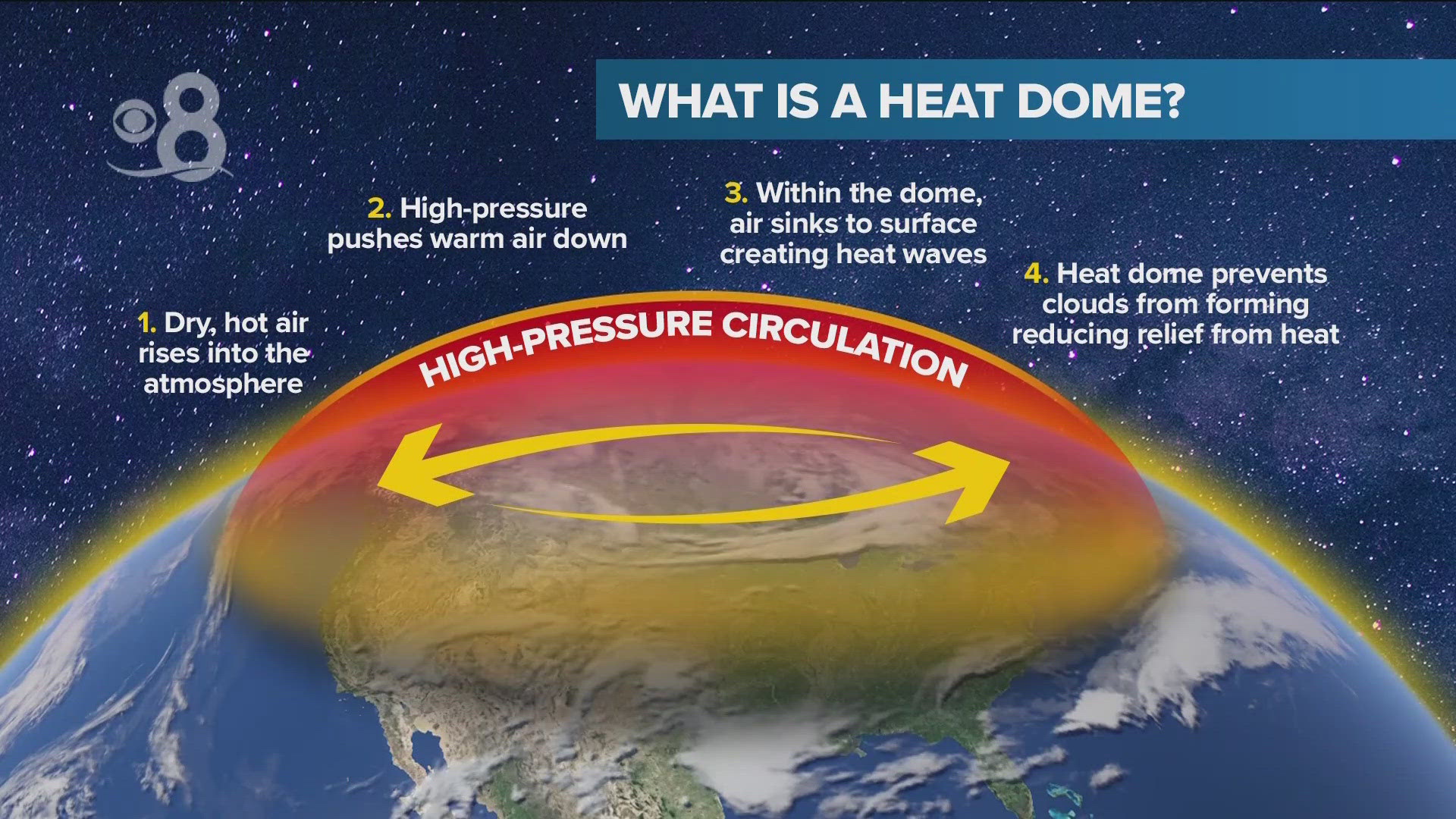SAN DIEGO COUNTY, Calif. — The first heat wave of the year continues to hit our desert areas hard in San Diego County Thursday with an excessive heat warning in place.
Southwestern U.S.
Experts say a "heat dome" across the Southwestern United States is the source of the sweltering temperatures.
“This is the first time we’ve seen it so far this year so it’s more or less our first heat wave,” said Stefanie Sullivan, Lead Meteorologist at National Weather Service San Diego.
Day two of this heat wave brought scorching temperatures well over 100 degrees in places like Ocotillo Wells and Borrego Springs.
“Across pretty much all of the Southwest we have this high-pressure area, and that’s what’s bringing our heat,” said Sullivan.


What's a 'heat dome'?
Sullivan told CBS 8 that a "heat dome" is loose terminology for what they call an "upper ridge of high-pressure." She explained how it creates these triple-digit temperatures.
“Where you have the high pressure, you tend to have sinking air, and as the air sinks, it compresses and warms up, so we get really warm air at the surface," said Sullivan. "And with the sinking motion, it tends to suppress cloud cover, so high pressure usually results in mostly sunny skies, a lot warmer weather.”
When will it happen?
- This heat dome spans across several states with parts of California, Nevada, and Arizona under an excessive heat warning until Friday at 8:00 p.m.
- Blazing temperatures in Phoenix climbed over 110 degrees Thursday, with popular hiking trails closed due to the hot weather.
“Make sure you stay hydrated with water. Wear loose, light-colored, loose-fitting clothing. Stay indoors if you can with air conditioning," advised Sullivan. "If you have to be outdoors, save it for early in the morning or in the evening when it’s a little bit cooler outside.”
CBS 8 asked Sullivan why such a stark contrast in temperature exists right now between our deserts and the beaches in San Diego County.
“It’s all just marine layer, sea breeze," explained Sullivan. "Our ocean temperatures are still pretty cold, so when we have the air blowing off that, it kind of acts as a natural air conditioner, you know, and the cloud cover prevents it from warming up so much too.”
Hotter as you head east
According to Sullivan, temperatures are nice and cool comparatively if you're west of the I-15, but once you head east and into the mountains, that’s not the case anymore.
“Once you start to get inland and especially higher elevations, you tend to get above the marine layer into warmer and drier air, so that air conditioning effect kind of shuts off, and you’re just kind of more in this ‘heat dome’ where you’re in the warmer air mass,” said Sullivan.
WATCH RELATED: Excessive Heat Warning issued for San Diego County deserts

